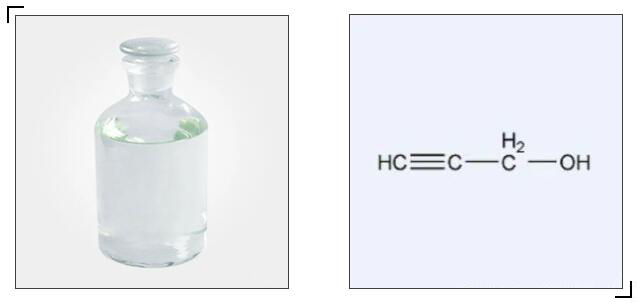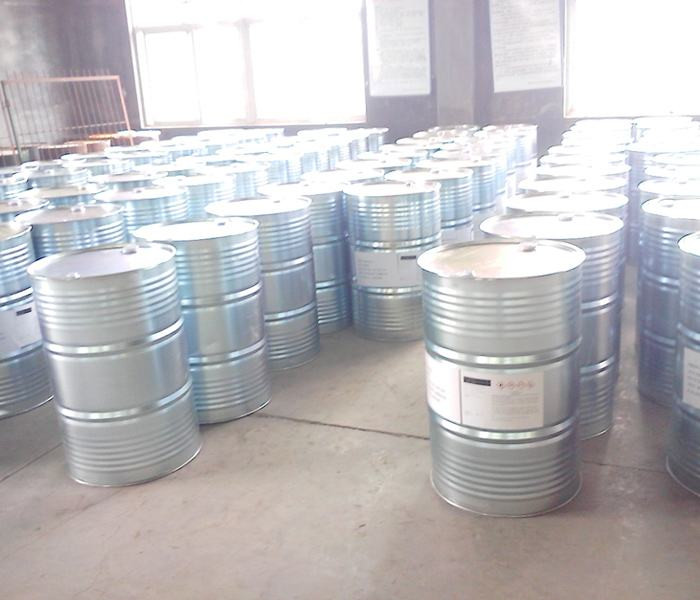Sinoright Blog
Highly Toxic Chemical in the Laboratory - Propargyl Alcohol
Propargyl Alcohol has a molecular formula of C3H4O and a molecular weight of 56. Colorless and transparent liquid, volatile with irritating odor, toxic, and seriously irritating to skin and eyes. Intermediates in organic synthesis. It is mainly used to synthesize the antibacterial and anti-inflammatory drug sulfadiazine; propylene alcohol can be produced by partial hydrogenation to produce resin, and n-propanol can be obtained by complete hydrogenation, which can be used as a raw material for the anti-tuberculosis drug ethambutol, as well as for the production of other chemical and pharmaceutical products. It can inhibit the corrosion of metals such as iron, copper and nickel by acids and can be used as a rust remover. Widely used in oil extraction. It can also be used as a solvent, stabilizer for chlorinated hydrocarbons, herbicides and pesticides. It can be used to produce acrylic acid, acrolein, 2-aminopyrimidine, γ-picoline, vitamin A, stabilizers, corrosion inhibitors, etc.
Other names: propargyl alcohol, 2-propyn-1-ol, 2-propynyl alcohol, propargyl alcohol and ethynylmethanol.

Toxicological Data
- Acute toxicity: Rat oral LD50: 70mg/kg;
- Rabbit transdermal LD50: 16mg/kg;
- Rat inhalation LD50: 2000mg/m3/2H
Ecological Data
- Toxic to aquatic life. Can cause adverse consequences to the water environment.
- Poisonous. Serious irritation to skin and eyes
Properties and Stability
- Avoid heat. Avoid contact with strong oxidants, strong acids, strong bases, acid chlorides, and acid anhydrides.
- Poisonous. It can cause serious irritation to skin and eyes. Protective glasses and gloves should be worn during operation.
Storage Method
- Store in a cool, ventilated warehouse. Keep away from fire and heat sources. The storage temperature should not exceed 30℃. Keep container tightly sealed. They should be stored separately from oxidants, acids, alkalis, and food chemicals, and avoid mixed storage. It should not be stored in large quantities or for long periods of time. Use explosion-proof lighting and ventilation facilities. It is prohibited to use mechanical equipment and tools that are prone to sparks. The storage area should be equipped with emergency release equipment and suitable containment materials. The "five pairs" management system for extremely toxic substances should be strictly implemented.
- Since propargyl alcohol has a low flash point and can react violently in the presence of impurities, special attention should be paid to safety. For short-term storage and transportation, clean and rust-free steel containers can be used. For long-term storage, stainless steel, glass or phenolic resin lined containers should be used, and materials such as aluminum should be avoided. Store and transport according to regulations on flammable chemicals.
Use
- Used as rust remover, chemical intermediate, corrosion inhibitor, solvent, stabilizer, etc. Organic synthesis intermediates, solvents, stabilizers for chlorinated hydrocarbons.
- It can be used as hydrochloric acid and other industrial pickling corrosion inhibitors in the acidizing and fracturing process of oil and gas wells. It can be used as a corrosion inhibitor alone. It is best to combine it with substances that produce synergistic effects to obtain higher corrosion inhibition efficiency. For example, in order to increase the corrosion inhibition of acetylenic alcohols in dilute sulfuric acid solution, sodium chloride, potassium chloride, calcium chloride, potassium bromide, potassium iodide or zinc chloride are often added for compound use.
- It can be used alone as a corrosion inhibitor, and it is best to compound it with substances that produce synergistic effects to obtain higher corrosion inhibition efficiency. For example, in order to increase the corrosion inhibition effect of acetylenic alcohol in dilute sulfuric acid solution, it is recommended to add sodium chloride, potassium chloride, calcium chloride, potassium bromide, potassium iodide or zinc chloride.
Emergency Treatment and Disposal Methods
Accidental leakage measures:
Cut off the fire source. Wear self-contained breathing apparatus and general fire protection clothing. Plug the leak while ensuring safety. Spray water mist to reduce evaporation. Mix and absorb with sand or other non-flammable adsorbent. Then transport it to an open place for burial, evaporation, or incineration. If there is a large amount of leakage, use dikes to contain it, then collect, transfer, recycle or dispose of it after harmless treatment.
Protective measures:
Respiratory system protection: When the concentration in the air is high, a gas mask should be worn. During emergency rescue or evacuation, it is recommended to wear self-contained breathing apparatus.
Eye protection: Wear chemical safety glasses.
Body protection: Wear anti-static overalls.
Hand protection: Wear protective gloves.
Others: Smoking is strictly prohibited at the work site. Avoid prolonged and repeated exposure.
First-Aid:
Skin contact: Take off contaminated clothing and wash thoroughly with soap and water.
Eye contact: Open the upper and lower eyelids immediately and rinse with running water for 15 minutes. Seek medical attention.
Inhalation: Move away to fresh air. Give oxygen if breathing is difficult. Once breathing stops, begin CPR immediately. Seek medical attention.
Ingestion: If swallowed by mistake, rinse mouth with water, drink enough warm water, induce vomiting, and seek medical attention immediately.
Cut off the fire source. Wear self-contained breathing apparatus and general fire protection clothing. Plug the leak while ensuring safety. Spray water mist to reduce evaporation. Mix and absorb with sand or other non-flammable adsorbent. Then transport it to an open place for burial, evaporation, or incineration. If there is a large amount of leakage, use dikes to contain it, then collect, transfer, recycle or dispose of it after harmless treatment.
Protective measures:
Respiratory system protection: When the concentration in the air is high, a gas mask should be worn. During emergency rescue or evacuation, it is recommended to wear self-contained breathing apparatus.
Eye protection: Wear chemical safety glasses.
Body protection: Wear anti-static overalls.
Hand protection: Wear protective gloves.
Others: Smoking is strictly prohibited at the work site. Avoid prolonged and repeated exposure.
First-Aid:
Skin contact: Take off contaminated clothing and wash thoroughly with soap and water.
Eye contact: Open the upper and lower eyelids immediately and rinse with running water for 15 minutes. Seek medical attention.
Inhalation: Move away to fresh air. Give oxygen if breathing is difficult. Once breathing stops, begin CPR immediately. Seek medical attention.
Ingestion: If swallowed by mistake, rinse mouth with water, drink enough warm water, induce vomiting, and seek medical attention immediately.

